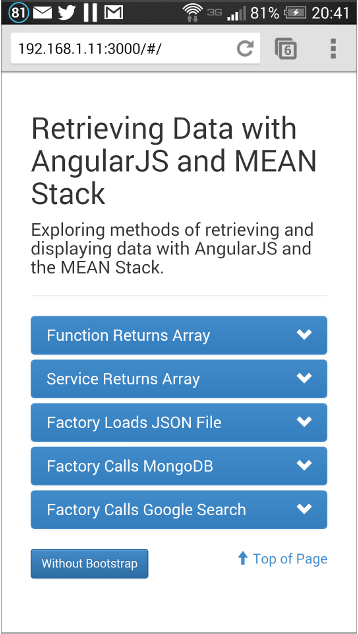Hey there folks:) I am going to set up a react/express app with Mongodb. Is there a smart way of setting up mongodb in webstorm? Thanks in advance Linda. It's an extremely simple question but can anyone kindly tell me how can I start mongod.exe from Webstorm instead of from Command Prompt? Thanks in advance.
Node.js documentation: IntelliJ/Webstorm Configuration. Make sure that the NodeJS plugin is enabled; Select your run configurations (screen). Learn about WebStorm MEAN (mongodb, expressjs, angularjs, node.js) stack walkthrough and tips and tricks in this video and blog post: http://bit.ly/1kriIgv. It's an extremely simple question but can anyone kindly tell me how can I start mongod.exe from Webstorm instead of from Command Prompt? Thanks in advance.
Ever since I got interested in Node.js and started learning to program in JavaScript, both the programming language and the server side platform have been most relevant to me. Due them, I have made my first PR to an open source project on Github, heck, I even built one of my own using them (see#100DaysOfCode) which currently has more than 6 people actively contributing and enhancing it.
With Node.js, from quickly building server side application to build fullstack application is not much of a hassle. There are two important solutions to this:
Webstorm Run Mongodb
- MEAN Stack
- Meteor.js

Webstorm Mongodb Data
MEAN Stack
MEAN Stack is the used to create complete web development solutions. With JavaScript it’s base, it has lot of advantages to offer and the important of all is one programming language both on server and client side. No context switching. A perfect fullstack solution for me personally.
MEAN is an acronym for MongoDB, ExpressJS, AngularJS, and Node.js. So instead of learning four different programming languages, you just need to know JavaScript.
Setup MEAN Stack in Webstorm
I am sharing a video here which shows on how to get started with MEAN using JetBrain’s Webstorm (A JavaScript IDE) by John Lindquist.
JetBrains released a new version of DataGrip that includes support for MongoDB and ships with the MongoDB Shell out of the box.
A few months ago, JetBrains released the first version of DataGrip that supports MongoDB. DataGrip is a professional DataBase IDE and is a great tool for advanced data exploration and analytical queries for your data in MongoDB and Atlas.
If you use any of the other JetBrains commercial products for development (e.g. IntelliJ, PhpStorm, PyCharm), you can install the Database Tools plugin and work with MongoDB right inside your IDE.
As we announced last week at MongoDB.live, the MongoDB plugin in DataGrip and in the other JetBrains IDE now includes a database console built on top ofthe MongoDB Shell. This is the result of a close collaboration between engineering teams at MongoDB and JetBrains and we are excited to finally release it to all our users.
With this integration, when you connect to MongoDB and Atlas with DataGrip, you get a console/shell experience that is 100% consistent with what you get in the terminal or in the other MongoDB’s developer tools.
DataGrip and Atlas
When your data is stored in Atlas, navigating through it with DataGrip is extremely easy.
For example, to connect to my free Atlas cluster, I can just grab a connection string from the Atlas UI, use it to add a new data source in DataGrip and I am connected and ready to explore my data.
Using Consoles
If you need to run queries, aggregations, or other database commands, consoles are a great way to do that.
The engineering teams at JetBrains and at MongoDB worked together to bring the new, embeddable MongoDB Shellto DataGrip and use it as the engine behind database consoles. This means the same commands that you can run in the MongoDB Shell are available in DataGrip and the other JetBrains IDEs and you can expect them to work exactly in the same way with the addition of the beautiful UI you are already used to on top.

A great fit for Atlas Data Lake

DataGrip works well MongoDB deployments, whether self-managed or in Atlas. You can also use it with Atlas Data Lake. If you have data is stored in Amazon S3 and you want to query and analyze it with MQL, you can create a Data Lake and start working with it right away.

DataGrip’s search capabilities give you a quick way to find the data you are interested in, and its powerful export tool makes it easy to extract it in the format you need to use it with other tools like Excel, for example.
Webstorm Mongodb Server
Get started with MongoDB Atlas and DataGrip
We are really happy with the result of our collaboration with the team at JetBrains and we are looking forward to working more together to bring all the future capabilities of the MongoDB Shell to DataGrip and the other JetBrains IDEs.
You can experience for yourself how DataGrip is a perfect companion for MongoDB Atlas:
Webstorm Mongodb Database
- Get a free MongoDB Atlas cluster;
- Deploy some sample datasets;
- Download DataGrip and start working with your data immediately.
